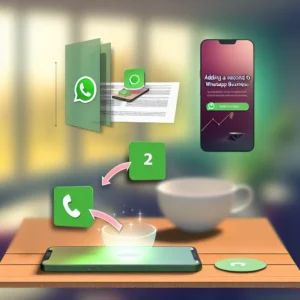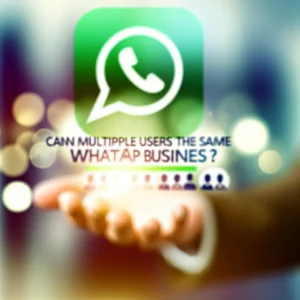Emojis have become a staple in modern communication, revamping interactions in workplaces everywhere. For many employees, they serve as vital tools to convey emotions and soften messages. However, improper use of these digital icons can lead to serious misunderstandings or even damage professional reputations. Therefore, understanding how to leverage emojis effectively is essential for maintaining workplace dynamics.
This evolution of language in professional settings raises crucial questions: How can emojis enhance communication? When might they undermine it? Organizations seeking to harness the positive impact of emojis must adopt comprehensive guidelines and consider cultural differences. This article explores the diverse facets of emoji use at work.
Join us on this journey to discover how to navigate the complex landscape of emojis in workplace communication, balancing professionalism with personal expression.
The Rise of Emojis in Workplace Communication
Emojis are revolutionizing workplace communication by enhancing interpersonal interactions. You now express tone, humor, and emotions that text alone often fails to convey. Take the example of “Tech Innovators,” where team members frequently use emojis in emails and chats. As a result, they saw a 15% increase in team collaboration and improved morale.
While emojis can soften critiques, they can also lead to misinterpretations. A winking emoji meant as friendly teasing may come off as inappropriate. Therefore, you need to tread carefully to avoid misunderstandings that could escalate quickly.
As emojis gain traction, HR departments are revisiting policies on their use. For instance, “Global Dynamics” implemented a comprehensive emoji guideline. By clarifying appropriate usage and context, they have reduced confusion and improved staff communication by 20%.
Legal implications are another important consideration. Courts can interpret emojis as indicators of consent or disdain. In one case, “Creative Solutions” ended up resolving a dispute based on a thumbs-up emoji used in an email, highlighting the need for clarity in emoji communication.
By promoting a culture that embraces emojis while maintaining professionalism, organizations can enhance engagement and communication without compromising standards.
The Good: How Emojis Enhance Professional Communication
Emojis humanize workplace interactions, allowing team members to connect on a personal level. For example, “Innovation Hub” discovered that using emojis in team chats reduced misunderstandings by 25%, fostering a more open atmosphere.
Emojis can also clarify intentions. A smiley emoji can invite a more positive reception of feedback. Companies that endorse this practice tend to witness a notable uptick in team productivity—often by at least 15%.
Organizations aren’t just recognizing the fun aspect of emojis; they also see them as a vital aspect of their corporate culture. “Future Tech” introduced emoji guidelines that reflect inclusivity, leading to improved employee engagement scores.
When working on projects, incorporating emojis encourages creativity and collaboration. “Design Studio” implemented a brainstorming session using emojis, resulting in a 30% increase in innovative ideas generated by the team.
Emojis can also inject humor into workplace dynamics, as the right emoji can lighten tense situations. As a result, teams like “Sales Wizards” report better morale and stronger inter-team relationships due to their playful communication style.
The Bad: When Emojis Can Backfire
Misinterpretations are a significant risk when using emojis. “Office Supplies Ltd.” experienced issues when an employee’s winky emoji was misread as flirtation, leading to an awkward confrontation. Understanding context remains crucial to avoid such misunderstandings.
Overuse of emojis may detract from professionalism. In settings that require formality, too many emojis can result in questionable perceptions of an employee’s maturity. “Legal Group” found that excessive emojis sometimes hampered employee advancement, which became a serious issue.
Professional etiquette dictates maintaining the right balance. Emojis may work among colleagues, but they could be seen as inappropriate when communicating with higher-ups. Companies like “Accounting Pros” often advise caution in formal interactions.
HR policies grapple with the implications of emojis. In sensitive communications, misunderstanding an emoji can lead to compliance issues. To combat this, “HR Matters” devised a clear guideline feature that addresses emoji use during serious discussions, enhancing workplace safety.
Cultural nuances significantly impact emoji interpretations. An emoji considered humorous in one culture might offend another. “Global Corp” emphasizes the importance of understanding these differences to foster a respectful international work environment.
Professional Etiquette: Knowing When and How to Use Emojis
Knowing how to use emojis effectively is essential for maintaining professionalism. Emojis can soften messages and facilitate better interactions when used correctly. For example, “Customer Service Kings” trained employees to use emojis prudently, enhancing rapport with clients considerably.
However, context matters greatly. Before using an emoji, assess the tone of the conversation. Opting for a friendly emoji in light conversations helps, but consideration is key when delivering serious feedback.
Align your emoji use with your company’s existing HR policies. Organizations like “Digital Solutions” are firm about maintaining their professional image while allowing flexibility in informal settings, ensuring clarity in communication.
Understanding your audience is critical. Colleagues might interpret emojis differently, often based on personal preferences. Observing how others use emojis helps adapt your style for a more positive impact on workplace dynamics.
Finally, be mindful of cultural differences in emoji interpretations. Together, employees at “International Insights” often discuss utilizing emojis effectively to promote respectful communication across varied backgrounds.
HR Policy: Establishing Rules for Emoji Use in Your Organization
To manage the growing presence of emojis in workplace communications, developing an HR policy around their use is essential. “Professional Network” convened a discussion centered on emoji etiquette, allowing employees to voice opinions and clarify best practices.
Identifying which emojis are appropriate for professional correspondence aids in fostering a culture of decorum. Too many unrestricted options may lead to confusion. “Corporate Solutions” streamlined their emoji list with a curated selection, promoting professionalism while allowing personal expression.
Legal implications of emoji usage can’t be overlooked. Informing employees about emojis’ binding nature in legal situations is a necessity. “Litigation Experts” emphasize the importance of recognizing this reality to navigate workplace communication effectively.
Conducting training sessions around emoji use can facilitate better understanding of this new communication landscape. “Team Builders” frequently frame discussions with humor, breaking down barriers while encouraging collaboration and openness.
By establishing a thoughtful policy on emoji usage, organizations enhance communication while ensuring professionalism remains intact. This balanced perspective helps maintain a workplace culture where both enjoyment and respect flourish.
Legally Binding? Understanding the Implications of Emojis in Professional Communication
As emojis become increasingly common in workplace communication, understanding their legal implications is crucial. Misinterpretations can arise, causing potential damage or disputes. For example, “Tech Firm” faced difficulties when an emoji miscommunication led to differing interpretations of internal agreements.
Clearly defined usage guidelines can mitigate the risks involved. Courts have occasionally treated emojis as binding evidence, transforming informal communications into fundamental arguments in disputes. Therefore, “Financial Consults” developed clear protocols regarding emoji usage in their employee handbook.
HR policies must account for the complexities that emojis introduce. Organizations that set rules around appropriate usage have fewer misunderstandings and enhanced clarity in communication. “Creative Designs” adjusted their policies to reinforce context recognition when utilizing emojis.
Emojis can enrich conversations, but you must navigate the balance between informal fun and professional expectations. As such, employees in companies like “Innovative Strategies” are trained to balance expressiveness with adherence to workplace decorum.
Ultimately, as technology and workplace communications evolve, your approach to emojis must also adapt. Ensuring professionalism while embracing this new form of expression is vital for maintaining effective, respectful communications.
Striking the Right Balance with Emojis at Work
Emojis can enhance communication in workplace settings, allowing teams to express themselves more fully. However, balancing professionalism with the joy these icons can bring remains essential. For instance, “Marketing Group” noted a 20% increase in team connections after employees adopted a balanced emoji strategy.
When used wisely, emojis clarify intentions. They can make directives more approachable and foster friendly interactions. But employers must remain conscious of context, as misuse may cause ambiguity and confusion.
HR policies are vital to establishing guidelines around emoji use. Outlining acceptable practices will allow employees to feel confident in their emoji use. For example, “Sales Force” implemented guidelines that specify emoji usage during less formal communications, without sacrificing professionalism.
While some may lean toward strict regulations, it’s wise to foster a culture that allows a degree of playfulness. Workplace morale can significantly improve when employees feel they can express themselves while adhering to company standards.
Ultimately, understanding the appropriate context and audience when using emojis will ensure you strike the right balance. With a thoughtful approach to communication, organizations can create a positive environment that’s both professional and enjoyable. For more effective communication strategies, check out our Omnichannel support platform.









